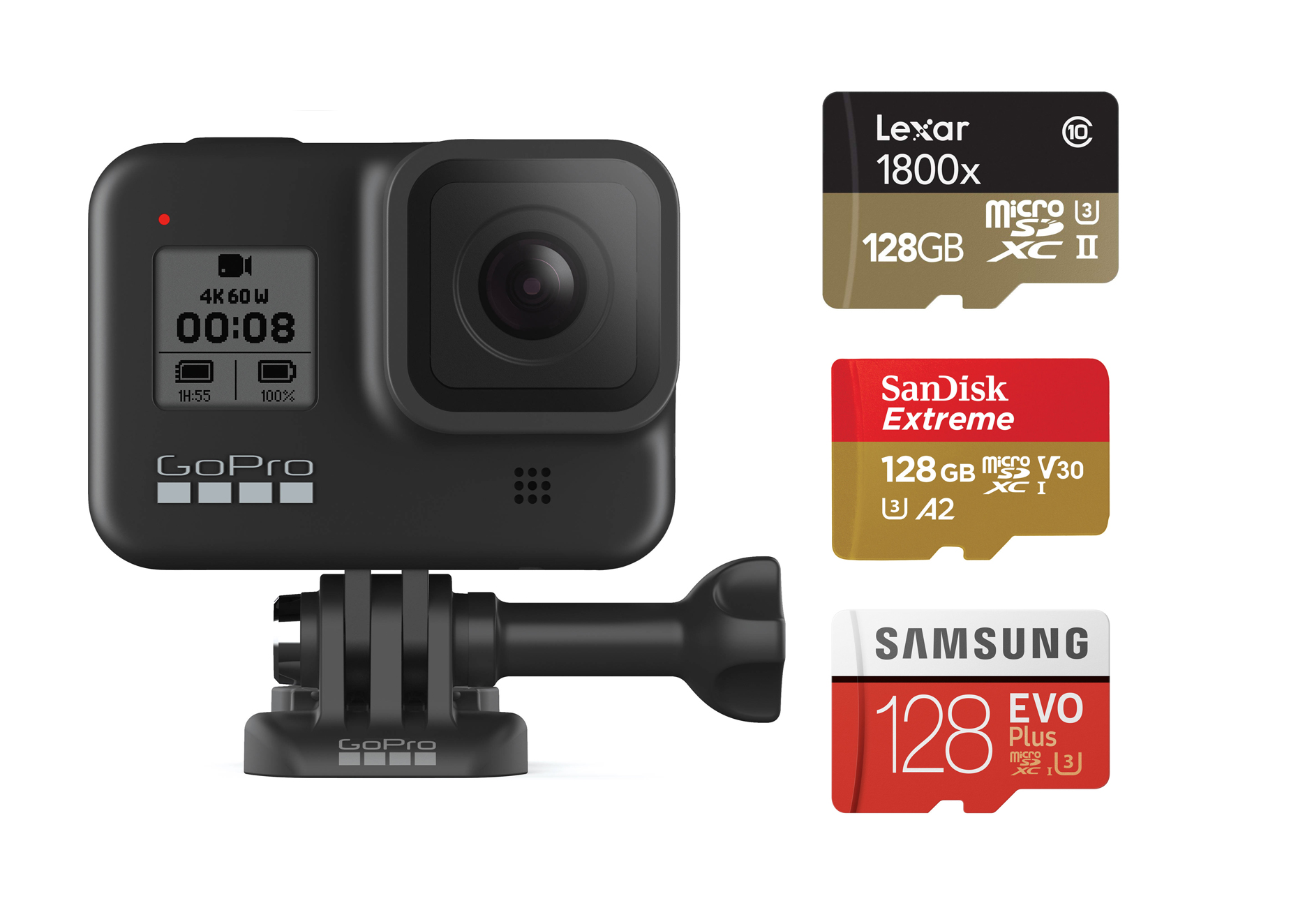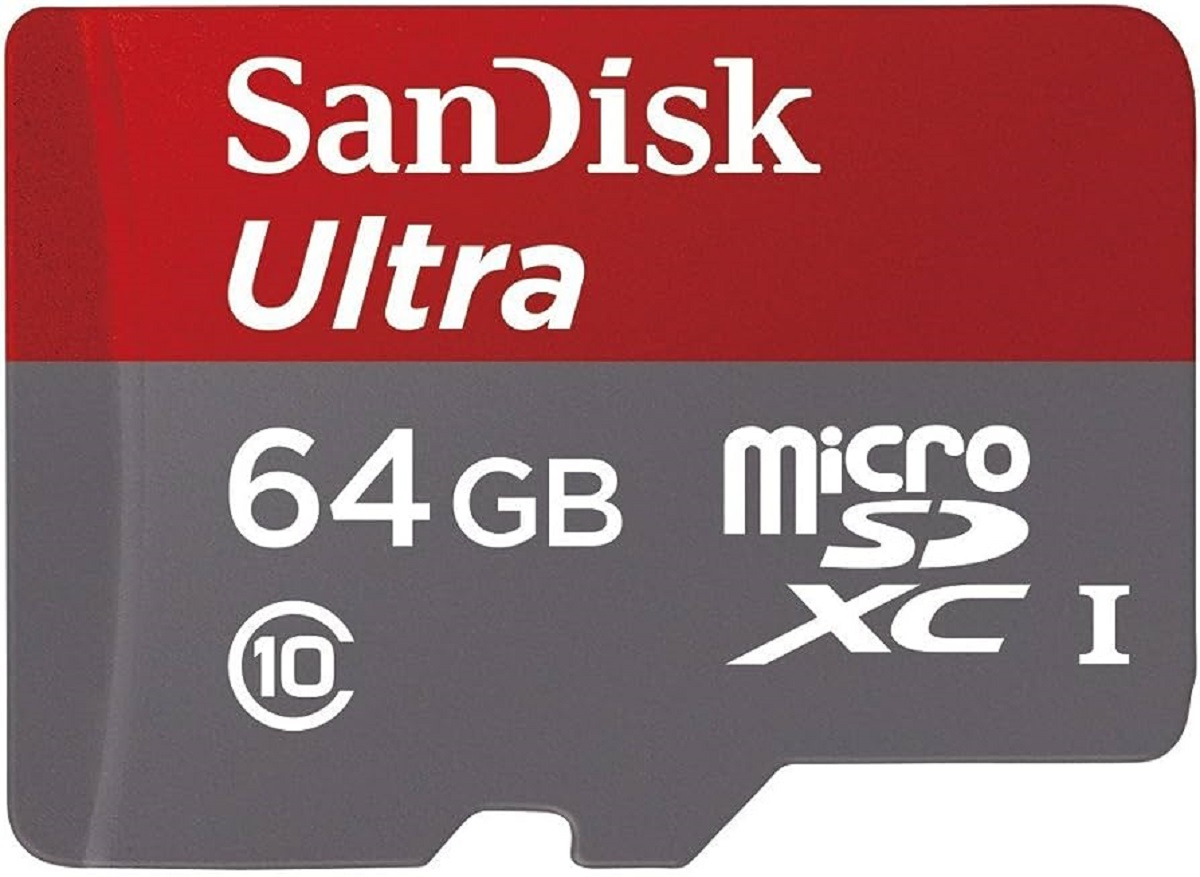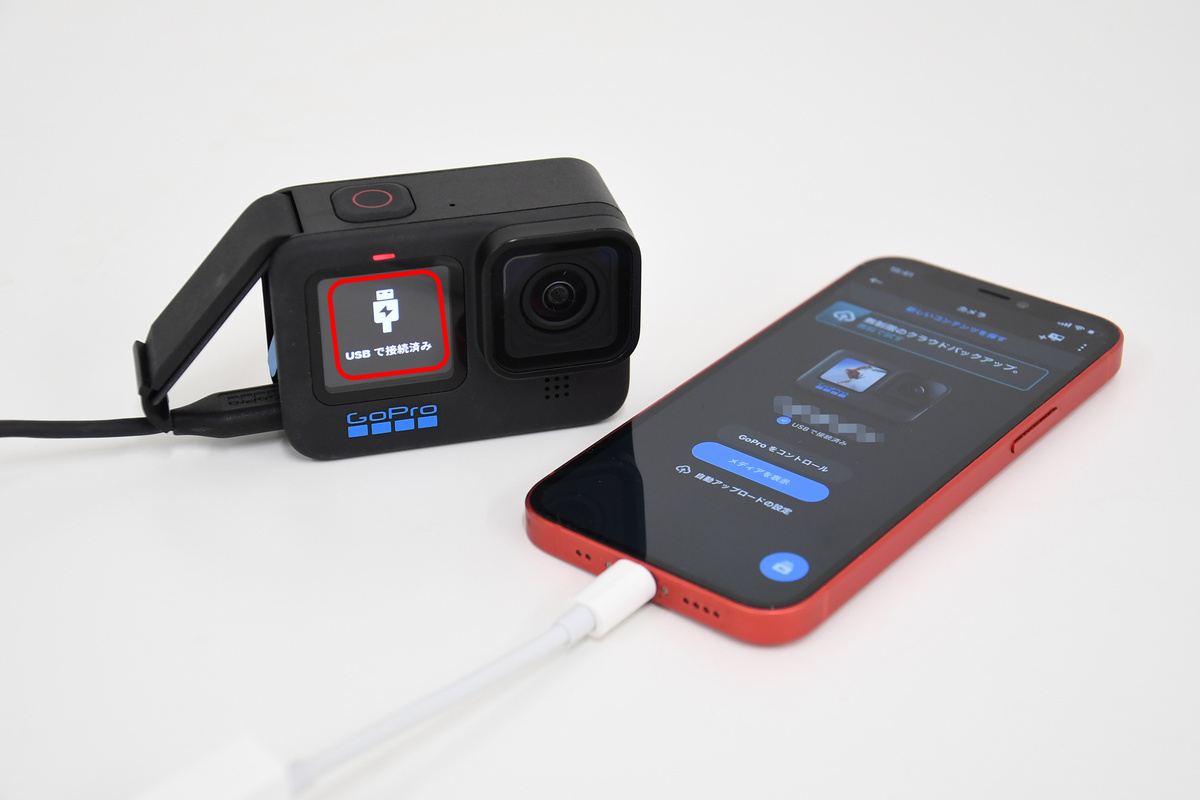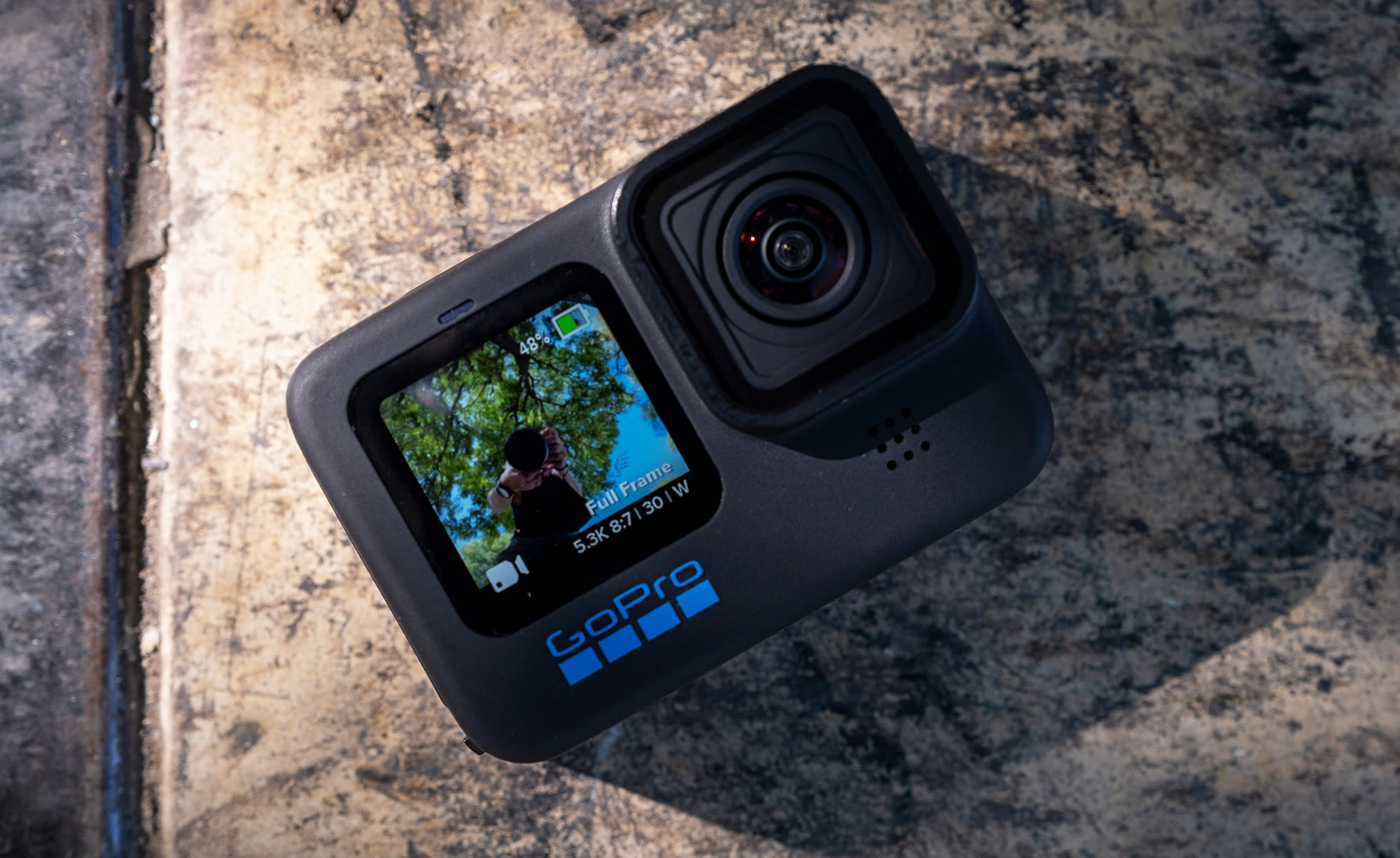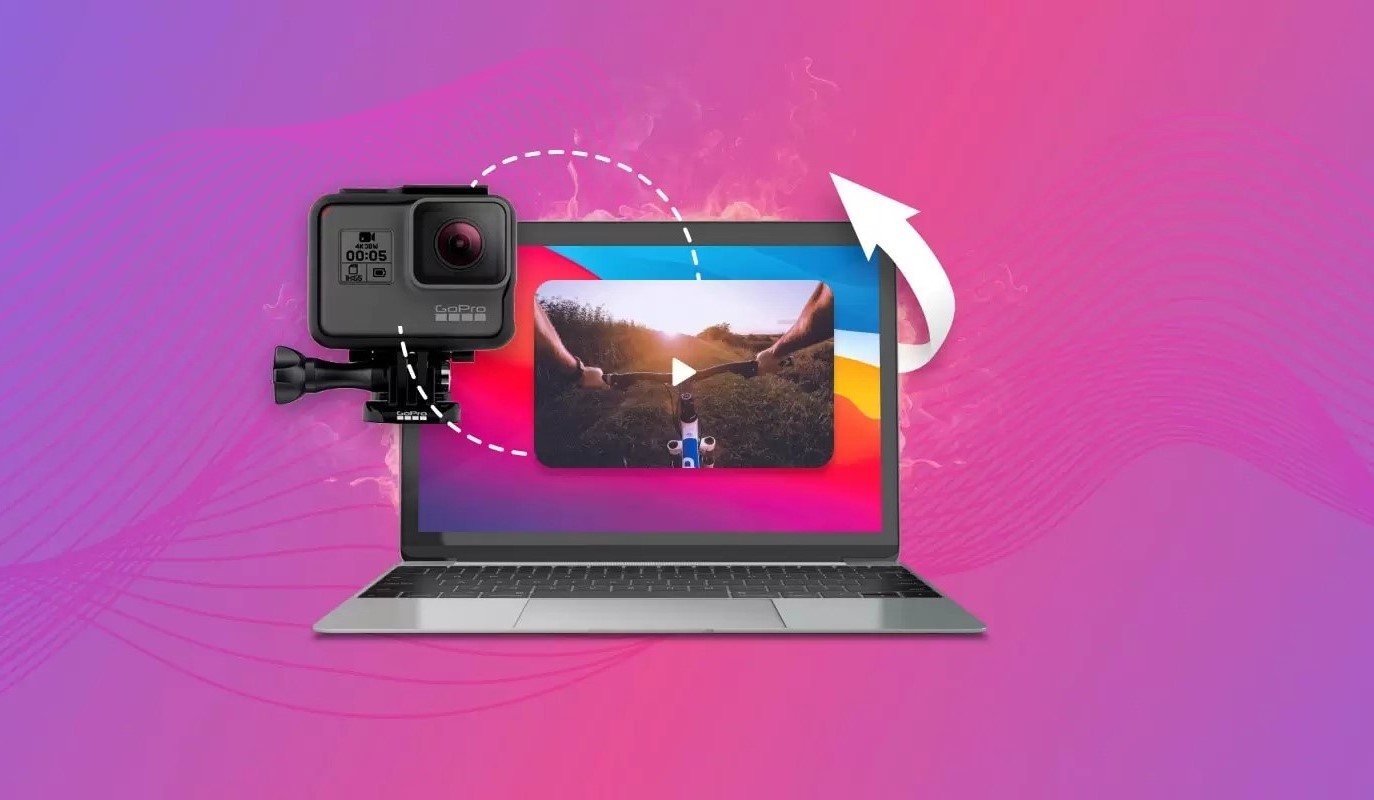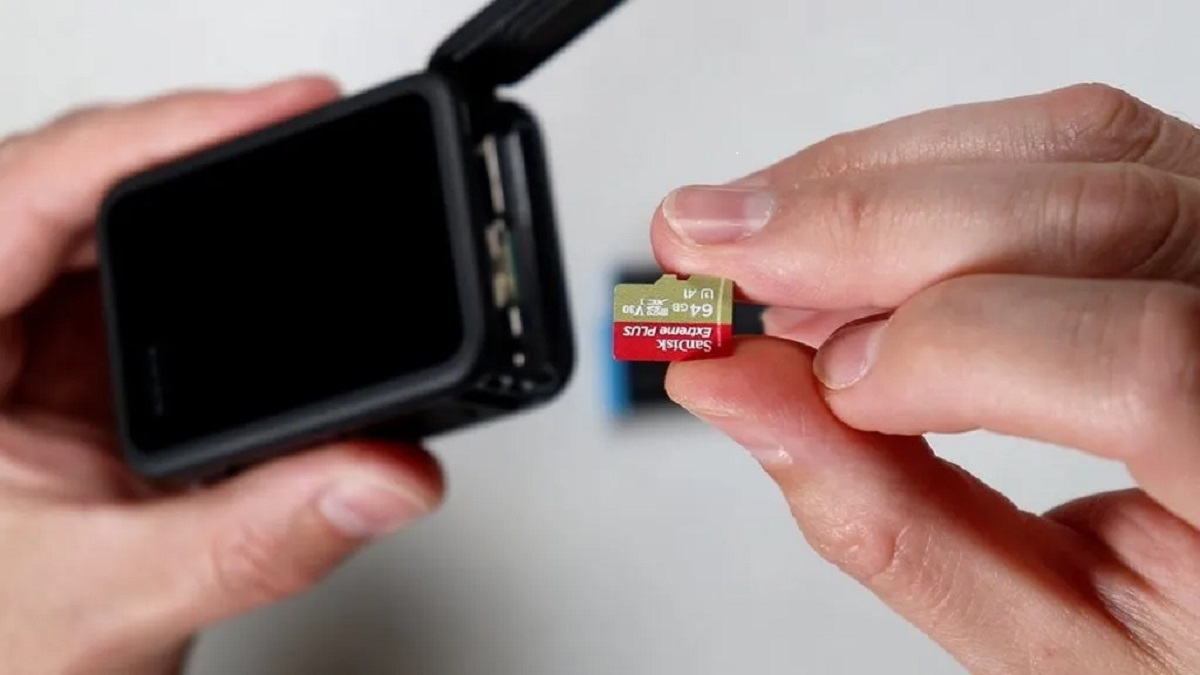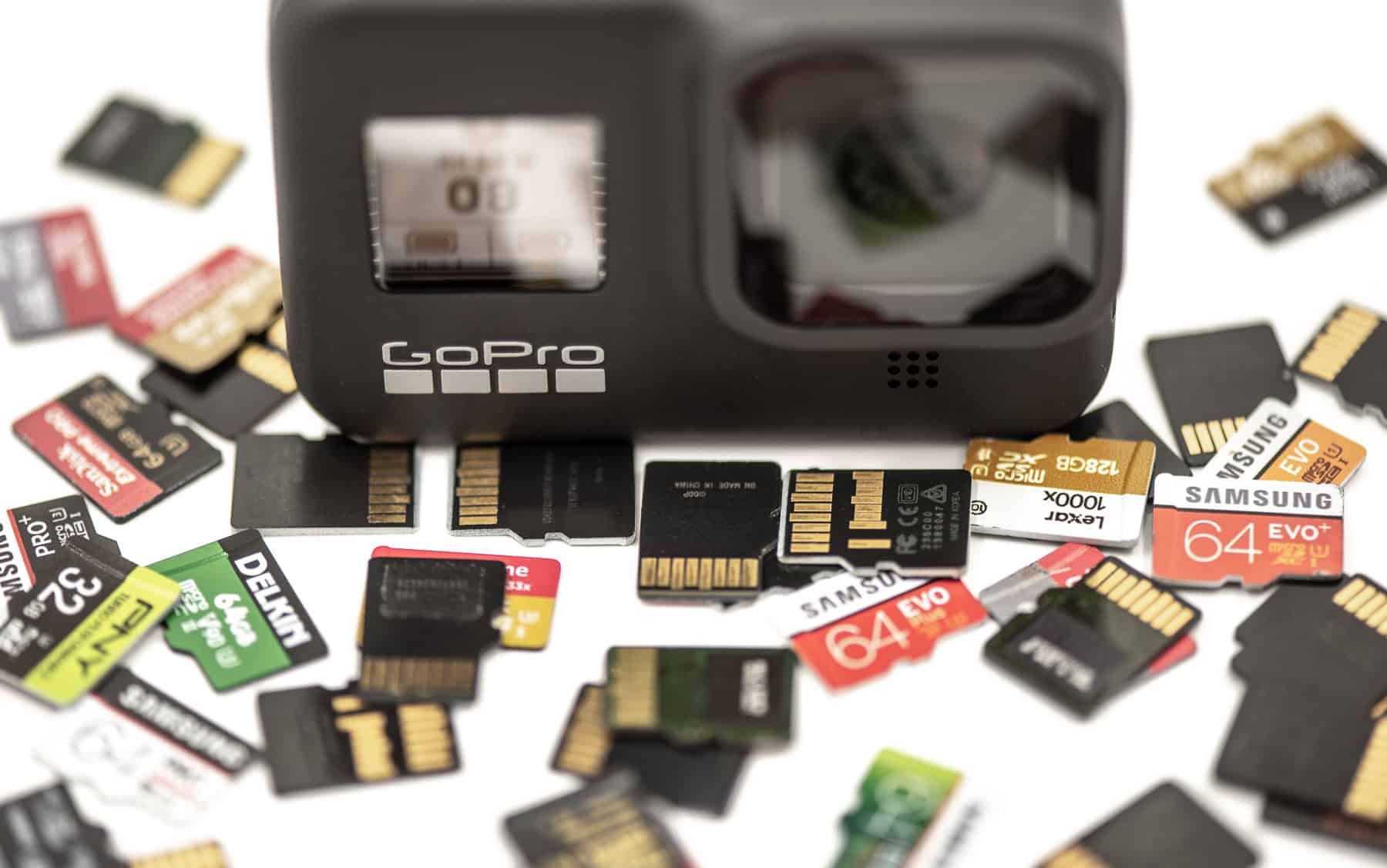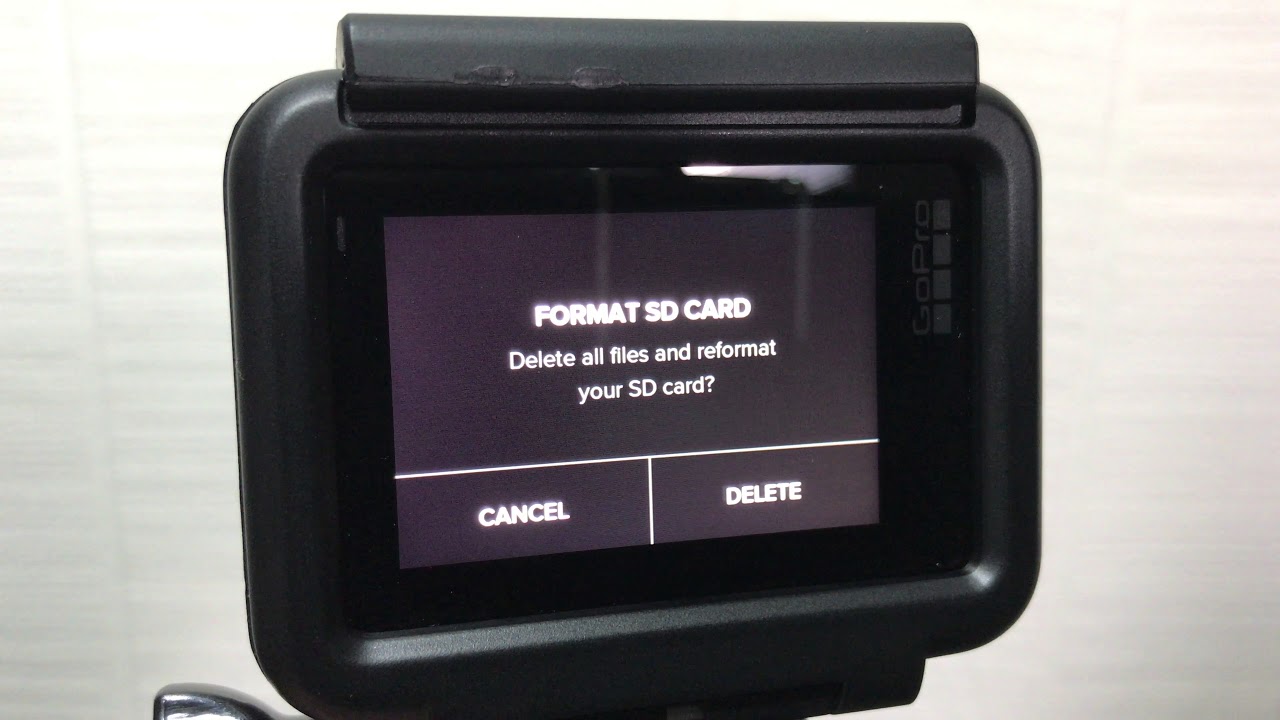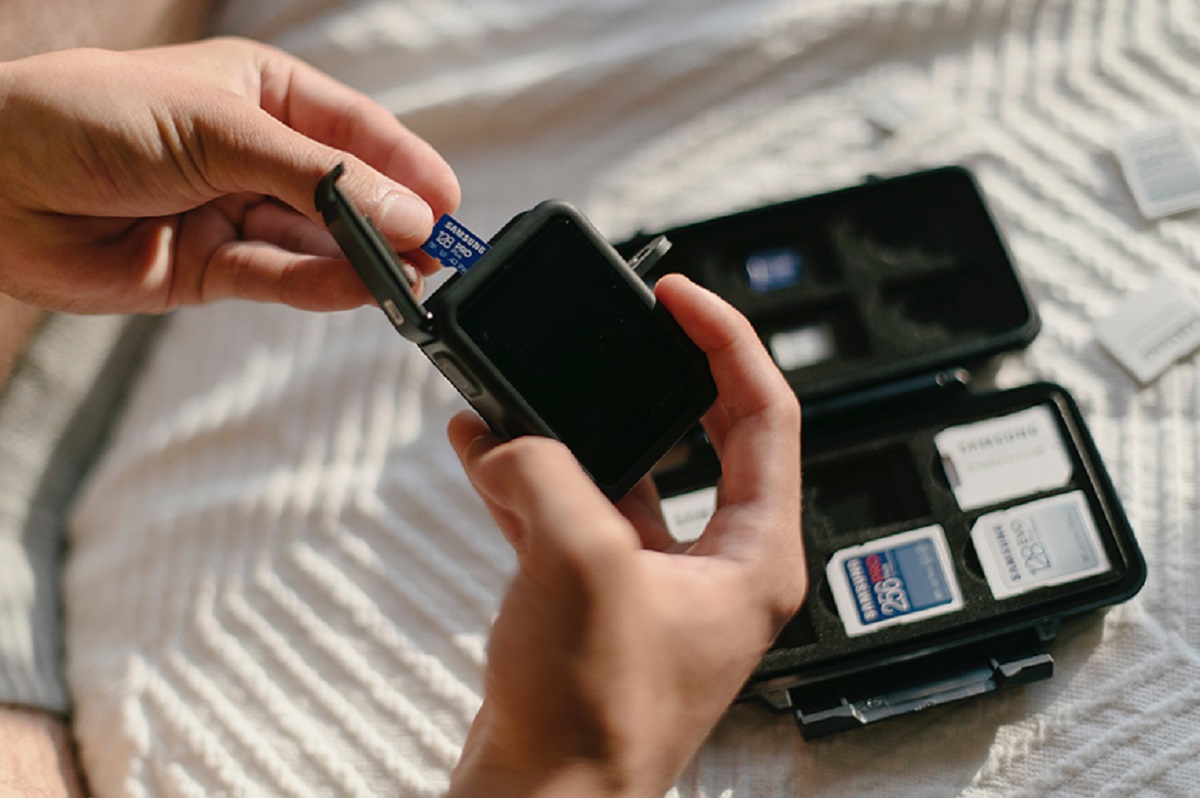Introduction
Welcome to the world of GoPro, where adventure awaits and memories are captured in breathtaking detail. Whether you’re a thrill-seeker documenting your daring stunts or a travel enthusiast capturing stunning landscapes, having the right SD card for your GoPro is essential. In this article, we will explore the importance of choosing the right SD card, factors to consider when selecting one, recommended options for different GoPro models, understanding SD card speed classes, and tips for using SD cards with your GoPro.
As an avid GoPro user, you understand the exhilaration of reliving your adventures through high-quality footage. But nothing can be more frustrating than losing or corrupting those precious moments due to an incompatible or inadequate SD card. Your GoPro is capable of recording videos in stunning 4K resolution, and to ensure smooth and uninterrupted recording, it is crucial to invest in a high-performance SD card that can keep up with the demands of your device.
With so many SD card options available in the market, it can be overwhelming to choose the right one. However, by considering a few key factors, you can make an informed decision and maximize your GoPro’s performance.
Before delving into the technicalities of SD cards, it’s important to note that not all SD cards are created equal. A regular SD card that you might use in your smartphone or camera may not have the necessary speed and capacity to handle the rigorous demands of a GoPro camera. Therefore, it is essential to choose an SD card that is specifically designed for action cameras and GoPro devices.
In the next sections, we will explore the factors to consider when choosing an SD card for your GoPro, the compatibility of different SD cards with various GoPro models, understanding SD card speed classes, and important tips to effectively use SD cards with your GoPro. By the end of this article, you will have a clear understanding of the type of SD card you need to capture stunning footage and preserve your adventure memories forever.
Importance of Choosing the Right SD Card for GoPro
When it comes to capturing your adventures with a GoPro, the importance of choosing the right SD card cannot be overstated. An SD card is like the backbone of your GoPro, as it stores all your videos and photos. Selecting a subpar or incompatible SD card can lead to frustrating issues such as slow write speeds, dropped frames, freezing, or even loss of footage. To ensure that you capture and preserve your memories effortlessly, here are a few reasons why choosing the right SD card for your GoPro is crucial.
1. Reliable and Smooth Recording: A high-quality SD card guarantees consistent and uninterrupted recording, even during fast-paced action. GoPro cameras are known for their ability to capture stunning footage in extreme conditions, and a compatible SD card will ensure that your camera can write data quickly and effortlessly. This means you won’t miss a single frame of your epic moments, whether you’re skiing down a mountainside or diving into the depths of the ocean.
2. Enhanced Performance: GoPro cameras have advanced features, such as high-resolution video recording and burst mode photography, that require an SD card capable of handling the increased data transfer rates. By opting for a high-performance SD card, you can take full advantage of these features and get the best possible performance out of your GoPro.
3. Ample Storage Capacity: Nothing is more disappointing than running out of storage space halfway through your adventure. Choosing an SD card with sufficient capacity ensures that you can capture all your memories without worrying about constantly deleting or transferring files. Whether you’re shooting hours of 4K footage or taking thousands of photos, a spacious SD card will give you the freedom to document your entire journey without restrictions.
4. Data Security and Durability: Sustaining the rugged adventures captured by your GoPro requires an SD card that is built to withstand harsh conditions. Look for SD cards that offer features like water resistance, shock resistance, and X-ray resistance. These durability features will protect your valuable footage from accidental damage, ensuring that your memories are safe and secure.
5. Compatibility with GoPro Accessories: Some GoPro accessories, such as the Karma Drone or the 3-Way Grips, require specific SD cards for optimal performance. By investing in the right SD card, you ensure seamless compatibility between your GoPro camera and any accessories you may use, allowing you to unlock the full potential of your equipment.
By carefully selecting the right SD card for your GoPro, you can avoid frustrating issues and capture your adventures with confidence. Whether you’re shooting extreme sports or documenting your travels, investing in a high-performance, compatible SD card will enhance your recording experience and ensure that your memories are preserved in the best possible quality. So, let’s dive deeper into the key factors to consider when choosing an SD card for your GoPro.
Factors to Consider When Choosing an SD Card for GoPro
Choosing the right SD card for your GoPro involves considering a few key factors to ensure optimal performance, compatibility, and reliability. Here are the factors you should keep in mind when selecting an SD card for your GoPro:
1. Speed Class: The speed class of an SD card determines how quickly it can write data. GoPro cameras require SD cards with fast write speeds to accommodate high-resolution video recording and burst mode photography. Look for SD cards with a UHS (Ultra High-Speed) Class 3 rating, which guarantees a minimum write speed of 30MB/s, ensuring smooth and uninterrupted recording.
2. Capacity: The capacity of the SD card determines how many photos and videos you can store. Consider your shooting needs and the duration of your adventures when selecting the card’s capacity. GoPro cameras are compatible with SD cards ranging from 16GB to 512GB or even higher. Keep in mind that higher-capacity cards allow you to capture more footage without constantly transferring files.
3. Compatible Formats: Ensure that the SD card you choose is compatible with the video and photo formats your GoPro supports. Most GoPro cameras utilize the MP4 format for video and JPEG or RAW for photos. It is important to check the specifications of both your camera and the SD card to ensure they are compatible.
4. Brand and Reliability: Opt for reputable brands when selecting your SD card. Established brands often provide better quality control, durability, and reliability, reducing the risk of card failure or data loss. It’s worth investing in a reliable SD card to safeguard your valuable footage.
5. Endurance: GoPro cameras are often subjected to extreme conditions, so it’s important to choose an SD card with good endurance. Look for cards specifically designed for action cameras or those that offer features like temperature resistance, water resistance, and shock resistance. These features ensure that your SD card can handle the demanding environments you’ll be capturing your adventures in.
6. Price: While it’s tempting to choose the most affordable option, remember that the SD card is a crucial component of your GoPro setup. Investing in a high-quality, reliable SD card might cost a bit more, but it’s worth the peace of mind and the assurance that your valuable footage will be safely stored.
By considering these factors, you can make an informed decision when selecting an SD card for your GoPro. Now that you have a better understanding of the factors to consider, let’s explore the compatibility of different SD cards with various GoPro models.
Compatibility with GoPro Models
When choosing an SD card for your GoPro, it is crucial to ensure compatibility with your specific GoPro model. While most SD cards will work with GoPro cameras, not all cards are optimized for the specific capabilities and requirements of each model. Here is a breakdown of the recommended SD cards for different GoPro models:
GoPro HERO9 Black: The GoPro HERO9 Black is the latest flagship model and is capable of recording stunning 5K videos and capturing 20-megapixel photos. It is recommended to use SD cards with a minimum UHS Speed Class 3 (U3) rating for optimal performance. Some recommended options for the HERO9 Black include SanDisk Extreme Pro, Lexar Professional 1000x, and Samsung EVO Plus.
GoPro HERO8 Black: The GoPro HERO8 Black features 4K video recording and 12-megapixel photos. It is also compatible with SD cards that have a minimum UHS Speed Class 3 (U3) rating. Recommended options for the HERO8 Black include SanDisk Extreme, Lexar Professional 633x, and Samsung EVO Plus.
GoPro HERO7 Black: The GoPro HERO7 Black supports 4K video recording and 12-megapixel photos. It is recommended to use SD cards with a minimum UHS Speed Class 3 (U3) rating. Some compatible options include SanDisk Extreme, Lexar Professional 633x, and Samsung EVO Plus.
GoPro HERO6 Black, HERO5 Black, HERO4 Black/Silver: The GoPro HERO6 Black, HERO5 Black, and HERO4 Black/Silver are capable of recording 4K video and capturing high-resolution photos. It is recommended to use SD cards with a minimum UHS Speed Class 3 (U3) rating for optimal performance. Some compatible options include SanDisk Extreme, Lexar Professional 633x, and Samsung EVO Plus.
GoPro HERO Session, HERO3, HERO+: These models support Full HD video recording and have lower-resolution photo capabilities. SD cards with a minimum UHS Speed Class 1 (U1) rating are recommended. Suitable options include SanDisk Ultra, Lexar 300x, and Samsung EVO Select.
It is important to note that these are just recommended options, and there may be other SD cards available in the market that are compatible with your GoPro model. Before purchasing an SD card, always refer to the GoPro website or the manufacturer’s specifications to ensure compatibility.
Understanding the compatibility of different SD cards with your GoPro model is essential for optimal performance, reliable recording, and the preservation of your precious memories. Now, let’s move on to understanding SD card speed classes and how they impact your GoPro’s performance.
Recommended SD Cards for Different GoPro Models
When it comes to selecting an SD card for your GoPro, choosing a reliable and high-performance option is vital to ensure smooth recording and the preservation of your precious footage. Here are a few recommended SD cards for different GoPro models:
GoPro HERO9 Black: For the GoPro HERO9 Black, which supports 5K video recording and 20-megapixel photos, it is recommended to use SD cards with a UHS Speed Class 3 (U3) rating for optimal performance. Some popular choices for the HERO9 Black include:
- SanDisk Extreme Pro: With fast write speeds and ample storage capacities, this SD card is perfect for capturing high-resolution videos and photos.
- Lexar Professional 1000x: Known for its reliability and speed, this SD card is a popular choice among professional photographers and videographers.
- Samsung EVO Plus: Offering fast read and write speeds, this SD card is compatible with the GoPro HERO9 Black and ensures smooth and consistent recording.
GoPro HERO8 Black: The GoPro HERO8 Black supports 4K video recording and 12-megapixel photos. Recommended SD cards for this model include:
- SanDisk Extreme: Designed for action cameras, this SD card offers fast write speeds for smooth recording even in challenging conditions.
- Lexar Professional 633x: With a UHS-I Speed Class 3 (U3) rating, this SD card is optimized for high-quality video recording and photo capture.
- Samsung EVO Plus: Known for its reliability and performance, this SD card is compatible with the HERO8 Black and ensures consistent recording.
GoPro HERO7 Black: The GoPro HERO7 Black, capable of shooting 4K video and capturing 12-megapixel photos, is well-suited for the following SD cards:
- SanDisk Extreme: Offering fast write speeds and a durable design, this SD card is perfect for capturing high-resolution footage with the HERO7 Black.
- Lexar Professional 633x: With a UHS-I Speed Class 3 (U3) rating, this SD card enables seamless recording and photo capture.
- Samsung EVO Plus: This SD card offers fast data transfer speeds and reliable performance for the HERO7 Black.
GoPro HERO6 Black, HERO5 Black, HERO4 Black/Silver: These models, capable of shooting 4K video and high-resolution photos, are compatible with the following SD cards:
- SanDisk Extreme: Known for its reliable performance and compatibility with GoPro cameras, this SD card is an excellent option for capturing crisp footage.
- Lexar Professional 633x: With a UHS-I Speed Class 3 (U3) rating, this SD card ensures smooth recording and photo capture.
- Samsung EVO Plus: Offering fast write speeds and ample storage capacities, this SD card is well-suited for the HERO6 Black, HERO5 Black, and HERO4 Black/Silver.
These are just a few recommended options for different GoPro models. It’s important to choose an SD card that meets your specific needs and shooting requirements. Before making a purchase, always check the GoPro website or the manufacturer’s specifications to ensure compatibility with your GoPro model.
Now that we have explored the recommended SD cards for different GoPro models let’s dive into understanding SD card speed classes and how they impact your GoPro’s performance.
Understanding SD Card Speed Classes
SD card speed classes indicate the minimum sustained write speed that an SD card can achieve for video recording. Understanding these speed classes is crucial for ensuring smooth and uninterrupted recording with your GoPro. Here are the different speed classes and what they mean:
Class 2: SD cards labeled as Class 2 have a minimum write speed of 2MB/s. While Class 2 cards may be suitable for standard-definition video recording, they are not recommended for use with GoPro cameras that require higher performance.
Class 4: SD cards labeled as Class 4 have a minimum write speed of 4MB/s. These cards can handle standard-definition video recording and may work for some older GoPro models. However, for higher-quality video recording and burst mode photography, it is best to choose a card with a higher speed class.
Class 6: SD cards labeled as Class 6 have a minimum write speed of 6MB/s. These cards are suitable for capturing high-definition video and can handle the demands of most GoPro models. However, for ultra HD and 4K video recording, it is recommended to choose a card with a higher speed class.
Class 10: SD cards labeled as Class 10 have a minimum write speed of 10MB/s. This speed class is generally considered the minimum requirement for high-definition video recording. Class 10 cards are compatible with most GoPro models and can handle recording at resolutions up to 1080p.
UHS Speed Class: The UHS (Ultra High-Speed) Speed Class represents the latest standard for SD card speed classification. UHS Speed Class cards have a bus interface that allows for faster data transfer rates. The two UHS Speed Classes you may encounter are U1 and U3:
- UHS Speed Class 1 (U1): U1 cards guarantee a minimum write speed of 10MB/s. These cards are suitable for high-definition video recording, including 1080p and some 2.7K resolutions.
- UHS Speed Class 3 (U3): U3 cards guarantee a minimum write speed of 30MB/s. These cards are recommended for capturing ultra-high-definition and 4K video, as well as burst mode photography.
It’s important to note that the minimum write speed indicated by the speed class is the sustained write speed. However, SD cards often have a higher maximum write speed, which can be useful for burst mode photography or transferring files to your computer more quickly.
When choosing an SD card for your GoPro, it’s recommended to opt for UHS Speed Class 3 (U3) cards to ensure the best performance. However, if you’re using an older GoPro model that supports lower video resolutions, a Class 10 card may be sufficient.
Now that you have a better understanding of SD card speed classes, it’s time to determine what size SD card you need for your GoPro camera.
What Size SD Card Do You Need for Your GoPro?
When it comes to choosing the size of the SD card for your GoPro, it’s important to consider your shooting needs, the duration of your adventures, and the resolution and frame rate at which you plan to capture your footage. Here’s a guide to help you determine the appropriate size SD card for your GoPro:
16GB to 32GB: If you mainly shoot shorter videos or take a limited number of photos, a 16GB or 32GB SD card should suffice for your GoPro. These sizes are suitable for casual users or those who capture footage during shorter outings.
64GB to 128GB: For those who engage in more frequent and longer recording sessions, a 64GB or 128GB SD card would be a better choice. These sizes provide ample space for extended video recording and a larger number of high-resolution photos without constantly transferring or deleting files.
256GB and above: If you’re planning on recording hours of high-resolution video footage or taking a massive number of photos on an extended adventure, consider using SD cards with a capacity of 256GB or higher. These larger capacity cards are ideal for professionals or enthusiasts who require extensive storage capabilities.
It’s important to keep in mind that higher-capacity SD cards allow you to capture more footage without worrying about space limitations. However, it’s always a good practice to back up your footage regularly to avoid losing valuable moments in case of card failure or accidental damage.
While it may be tempting to opt for the largest capacity available, it’s also essential to consider the recording time limitations imposed by some GoPro models. For example, certain older GoPro models may have limitations on the maximum file size or total recording time per video file. It’s crucial to consult the GoPro documentation or check the specifications of your specific model to ensure compatibility and avoid any unexpected issues.
By choosing the appropriate size SD card for your GoPro, you’ll have the space needed to capture all your adventures without running out of storage. Now that you know what size SD card to use, let’s move on to some helpful tips for using SD cards effectively with your GoPro.
Tips for Using SD Cards with GoPro
To ensure optimal performance and the longevity of your SD card when using it with your GoPro, here are some essential tips to keep in mind:
1. Format the SD card: Before using a new SD card or reusing an existing one, it’s crucial to format it within the GoPro camera. Formatting helps optimize the card’s performance and ensures compatibility with your specific model.
2. Use high-quality, reputable SD cards: Invest in SD cards from reliable brands to ensure better performance and reduce the risk of card failure or data loss. Reputable brands often provide higher durability, faster write and read speeds, and better compatibility with GoPro cameras.
3. Avoid removing the card during recording: Removing the SD card while the GoPro is recording can lead to data corruption or even permanent damage to the card. Always stop the recording and power off the camera before safely removing or inserting the card.
4. Keep spare SD cards handy: It’s a good practice to carry spare SD cards when going on extended adventures. This ensures that you always have additional storage space available and reduces the risk of running out of storage at critical moments.
5. Transfer files regularly: To free up space on your SD card and prevent the risk of data loss, transfer your files to a secure storage location regularly. This can be a computer, an external hard drive, or a cloud storage service. Remember to check that your files have been successfully transferred before deleting them from the SD card.
6. Protect your SD card: Ensure that the SD card slot on your GoPro is free from dirt, dust, and moisture before inserting the card. Additionally, protect the SD card itself from physical damage by using a protective case or carrying it in a secure pocket.
7. Check for firmware updates: It’s a good practice to regularly check for firmware updates for your GoPro camera. Firmware updates often include improvements or compatibility enhancements for SD cards, ensuring better performance and reliability.
8. Avoid extreme temperatures: High temperatures can cause SD card failures, while extremely low temperatures can lead to slower response times and reduced performance. Try to avoid exposing your GoPro and SD card to extreme temperature conditions whenever possible.
9. Safely eject the SD card: When disconnecting your GoPro from a computer or card reader, always follow the proper procedure for ejecting the SD card to avoid potential data corruption.
10. Regularly check and clean the SD card contacts: Over time, the contacts on the SD card can accumulate dirt, dust, or debris. To maintain a reliable connection and prevent read or write errors, use a clean, lint-free cloth to gently wipe the gold contacts of the SD card.
By following these tips, you can ensure the smooth operation of your SD card and capture all your adventures without any hiccups. Now that you have a comprehensive understanding of choosing and using SD cards with your GoPro, you’re ready to embark on your next thrilling adventure and capture those unforgettable moments.
Conclusion
Choosing the right SD card for your GoPro is crucial to ensure smooth and reliable recording, seamless compatibility, and the preservation of your precious memories. By considering factors such as speed class, capacity, compatibility, and brand reliability, you can make an informed decision when selecting an SD card for your GoPro.
It’s important to choose an SD card with a speed class that meets the recording requirements of your GoPro model. Opting for UHS Speed Class 3 (U3) is recommended for capturing ultra-high-definition video and burst mode photography. Additionally, selecting an SD card with ample capacity ensures that you have enough storage space to capture your adventures without limitations.
By following best practices, such as formatting the SD card within the GoPro camera, using reputable brands, transferring files regularly, and protecting the card from physical damage, you can maximize the performance and lifespan of your SD card.
Remember to consider the specific compatibility requirements of your GoPro model when choosing an SD card. Recommended options for different GoPro models provide optimized performance and reliability.
Understanding the different speed classes of SD cards and their impact on your GoPro’s performance is essential for capturing smooth and uninterrupted footage. By selecting the appropriate size SD card based on your shooting needs and the duration of your adventures, you can ensure that you have enough storage space without running out during critical moments.
With these tips in mind, you are ready to choose the right SD card and unleash the full potential of your GoPro. Capture your adventures with confidence, knowing that you have a reliable, high-performance SD card that can handle the demands of a thrilling and action-packed journey.
So, gear up, grab your GoPro, and start capturing those unforgettable moments that will be cherished for years to come.







